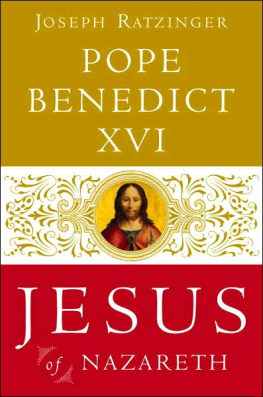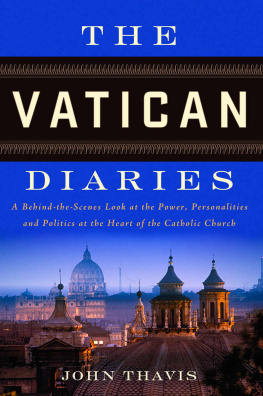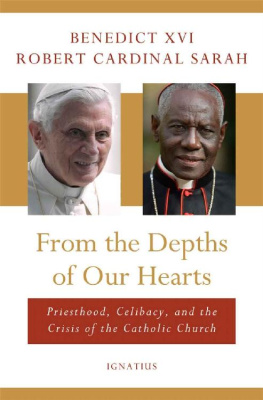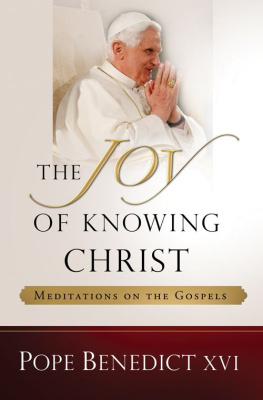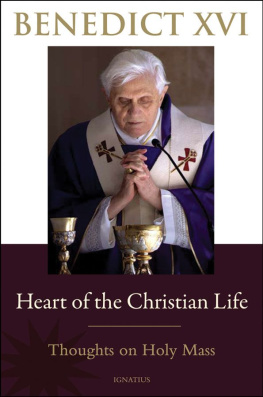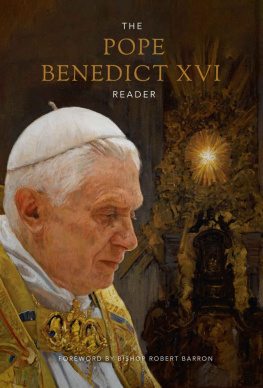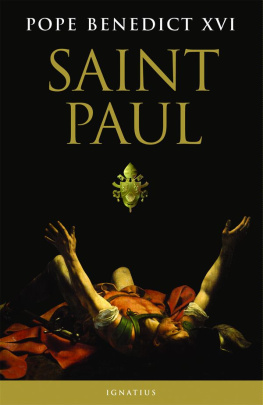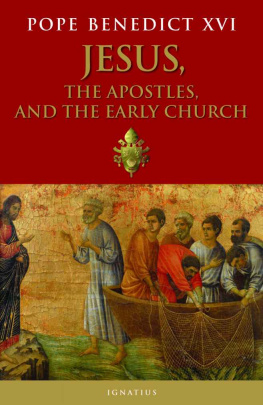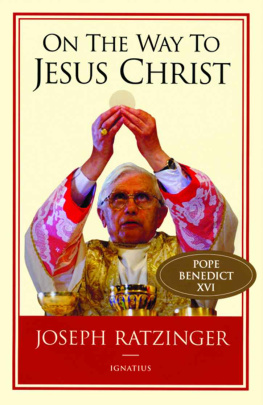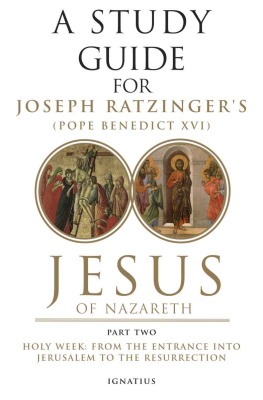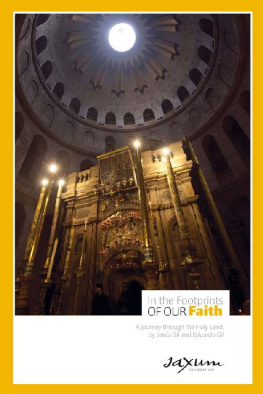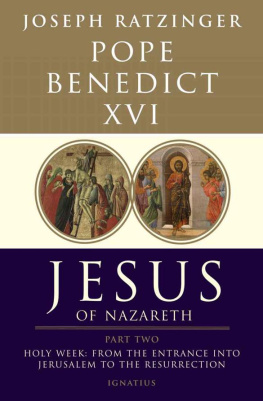Pope Benedict XVI - Jesus of Nazareth: From the Baptism in the Jordan to the Transfiguration
Here you can read online Pope Benedict XVI - Jesus of Nazareth: From the Baptism in the Jordan to the Transfiguration full text of the book (entire story) in english for free. Download pdf and epub, get meaning, cover and reviews about this ebook. year: 2007, publisher: The Doubleday Religious Publishing Group, genre: Religion. Description of the work, (preface) as well as reviews are available. Best literature library LitArk.com created for fans of good reading and offers a wide selection of genres:
Romance novel
Science fiction
Adventure
Detective
Science
History
Home and family
Prose
Art
Politics
Computer
Non-fiction
Religion
Business
Children
Humor
Choose a favorite category and find really read worthwhile books. Enjoy immersion in the world of imagination, feel the emotions of the characters or learn something new for yourself, make an fascinating discovery.
- Book:Jesus of Nazareth: From the Baptism in the Jordan to the Transfiguration
- Author:
- Publisher:The Doubleday Religious Publishing Group
- Genre:
- Year:2007
- Rating:3 / 5
- Favourites:Add to favourites
- Your mark:
- 60
- 1
- 2
- 3
- 4
- 5
Jesus of Nazareth: From the Baptism in the Jordan to the Transfiguration: summary, description and annotation
We offer to read an annotation, description, summary or preface (depends on what the author of the book "Jesus of Nazareth: From the Baptism in the Jordan to the Transfiguration" wrote himself). If you haven't found the necessary information about the book — write in the comments, we will try to find it.
Jesus of Nazareth: From the Baptism in the Jordan to the Transfiguration — read online for free the complete book (whole text) full work
Below is the text of the book, divided by pages. System saving the place of the last page read, allows you to conveniently read the book "Jesus of Nazareth: From the Baptism in the Jordan to the Transfiguration" online for free, without having to search again every time where you left off. Put a bookmark, and you can go to the page where you finished reading at any time.
Font size:
Interval:
Bookmark:

GLOSSARY
(PREPARED BY THE PUBLISHER)
Apocalypse: n. Genre focused on eschatology and/or visions of heavenly mysteries. See eschatology. Adjective: apocalyptic.
Apocryphal: adj. Designates writings not included in the Churchs canon of Holy Scripture.
Aramaic: n. A Semitic language, a dialect of which was probably spoken by Jesus. The New Testament preserves several of his words in Aramaic.
Babylonian Exile: n. See exile.
Babylonian Talmud: n. Best-known version of the Talmud, whose composition goes back to Jews living in Babylon in the third century A.D.
Book of Enoch: n. Collection of five apocryphal texts. Usually refers to apocalyptic 1 Enoch, the whole of which is preserved only in Ethiopic. See apocryphal, apocalypse.
Byzantine liturgy: n. Liturgy of the Eastern Orthodox and of Christians of the same tradition in communion with Rome.
Cathedra: n. Latinized form of Greek for chair. Refers here to the chair of a teacher, with a connotation of professorial chair that German readers will hear in the word cathedra.
Cephas: n. Aramaic term meaning rock. The name conferred by Jesus upon Simon Peter.
Christology: n. Branch of theology dealing with the person and work of Jesus Christ. Also the set of claims about Jesus as Messiah and divine Son reflected in the New Testament. Adjective: Christological.
Church Fathers: n. See Fathers of the Church.
Communio: n. Latin for fellowship. Connotes here a deep interconnection. Greek equivalent is koinonia.
Community: n. Often refers here to the early church contexts in and for which the New Testament books are thought to have been written.
Consubstantial: adj. Possessing numerically one and the same being or substance. Christ, as Son, is consubstantial with the Father, just as all three persons of the Trinity are consubstantial with one another. Greek equivalent is homoosios.
Decalogue: n. The Ten Commandments.
Deutero-Isaiah: n. Anonymous prophet to whom Isaiah 4055 is ascribed.
Eastern Church: n. The Eastern Orthodox Church and the Churches of the same tradition in communion with Rome.
Ecclesial: adj. Pertaining to the Church or reflecting the mind of the Church.
Ecclesiology: n. Branch of theology dealing with the Church. Also refers here to the claims about the Churchs nature and mission reflected in the New Testament. Adjective: ecclesiological.
Ekklesia: n. Transliteration of Greek for Church.
Embolism: n. A prayer of the Mass immediately following the Our Father that begins: Deliver us, Lord.
Epiphany: n. Liturgical feast traditionally celebrated on January 6. Associated with the adoration of the magi, a symbol of the revelation of Christ to the nations. See feast, liturgy.
Eschatological: adj. See eschatology.
Eschatology: n. Doctrine about, or content of, the end times. Refers also to the ultimate truth and fullness Christ brings us as the Kingdom of God in person.
Eschaton: n. Greek term referring to final state of the world after the Second Coming of Christ.
Exaltation: n. Christs elevation on the Cross and in his Resurrection.
Exalted: adj. See exaltation.
Exile: n. The deportation of the Jews from their homeland, especially the sixth-century B.C. deportation to Babylon.
Ezra, 4: n. Apocryphal apocalyptic work thought to date from the end of the first century A.D.
Farewell Discourses: n. Discourses of Jesus found in John 13:3117:26.
Fathers of the Church: n. Saintly theologians writing between the first and eighth centuries A.D. who are main sources of Catholic doctrine.
Feast: n. A liturgical celebration commemorating some particular event. See liturgy.
Form criticism: n. An exegetical method that analyzes the literary genre of a biblical text in terms of its sociological context with the aim of reconstructing the process of oral and written tradition leading from the actual historical events to the texts final form.
Fourfold sense of Scripture: n. An ancient doctrine holding that, beyond its literal meaning, Scripture has a spiritual sense, traditionally subdivided into three parts: allegorical (concerning the fulfillment of the Old Testament history in Christ), tropological (how we should live our lives), and anagogical (about the ultimate end of history).
Gate liturgy: n. A special liturgy having to do with entrance through the Temple gates in Jerusalem.
Gnosticism: n. Complex intellectual-spiritual movement roughly contemporaneous with Christianity that identified matter with evil and taught a secret knowledge (gnosis) to liberate mans divine spark from it. Adjective: gnostic.
Hermeneutic: adj. Pertaining to interpretation, here of Scripture.
Herodian Temple: n. Temple at Jerusalem under Herod the Great (74 B.C.A.D. 4), who embellished it but also staffed it in conformity to his politics.
Herodians: n. Sect or party mentioned by the New Testament among Jesus adversaries.
High-priestly prayer: n. Jesus prayer to the Father at the Last Supper. See John 17.
Historicity: n. Here, the historical factuality or reliability of the Gospels.
History of salvation: n. The sequence of Gods historical interventions recorded in the Bible. Underscores that revelation is a matter of historical action, and not simply of ideas.
Homoosios: adj. Possessing numerically one and the same being or substance. Christ, as Son, is homoosios with the Father, just as all three persons of the Trinity are homoosios with one another. Synonymous with consubstantial.
Icon: n. In the Eastern Church, an image, painted according to strict theological and artistic rules, of a sacred personage. See Eastern Church.
Iconographic: adj. Here, pertaining to traditional icon motifs. See icon.
Incarnation: n. The act whereby the Son of God became man. Adjective: incarnational. The adjective can also connote an emphasis on the goodness of material creation.
Knosis: n. The self-emptying of Christ to the point of the Cross.
Koine: n. Hellenistic form of Greek in which the New Testament was written.
Koinonia: n. Greek for fellowship. Connotes here a deep interconnection. Latin equivalent is communio.
Kyrios: n. Greek for Lord. Used in the Greek translation of the Old Testament as a name for God and in the Greek New Testament as a name for God and Christ.
Latin Fathers: n. Latin-speaking Fathers of the Church such as Augustine. See Fathers of the Church.
Liturgy: n. Ritual worship of God, especially in the Temple or synagogue (for Jews) or in a church (for Christians). More specifically, the ritual of the Eucharist or the Mass.
Logos: n. Greek for reason, rationality, or meaning. Also Jesus as the Word of God (see John 1:1). When used in that sense here it appears with uppercase L.
Magisterium: n. The office and exercise of formulating doctrine in the Catholic Church.
Mandaean scriptures: n. Sacred texts of dualistc sect (Mandaeans) dating back to early Christian era.
Next pageFont size:
Interval:
Bookmark:
Similar books «Jesus of Nazareth: From the Baptism in the Jordan to the Transfiguration»
Look at similar books to Jesus of Nazareth: From the Baptism in the Jordan to the Transfiguration. We have selected literature similar in name and meaning in the hope of providing readers with more options to find new, interesting, not yet read works.
Discussion, reviews of the book Jesus of Nazareth: From the Baptism in the Jordan to the Transfiguration and just readers' own opinions. Leave your comments, write what you think about the work, its meaning or the main characters. Specify what exactly you liked and what you didn't like, and why you think so.

